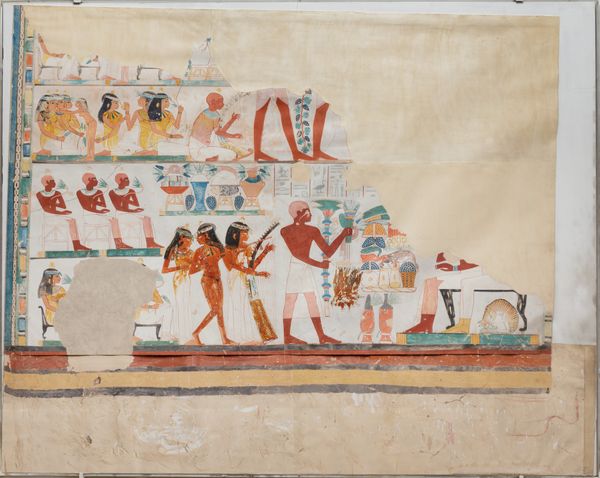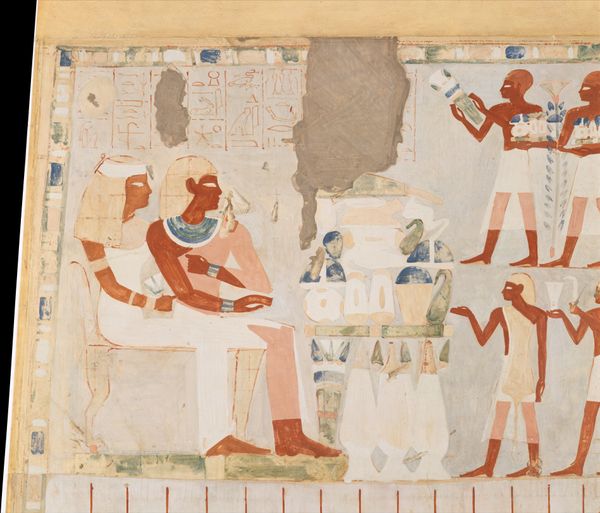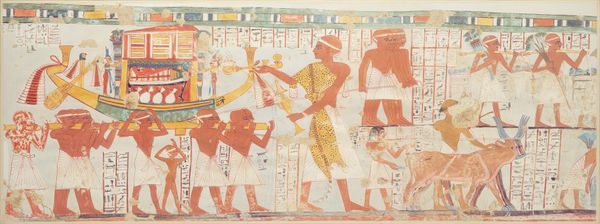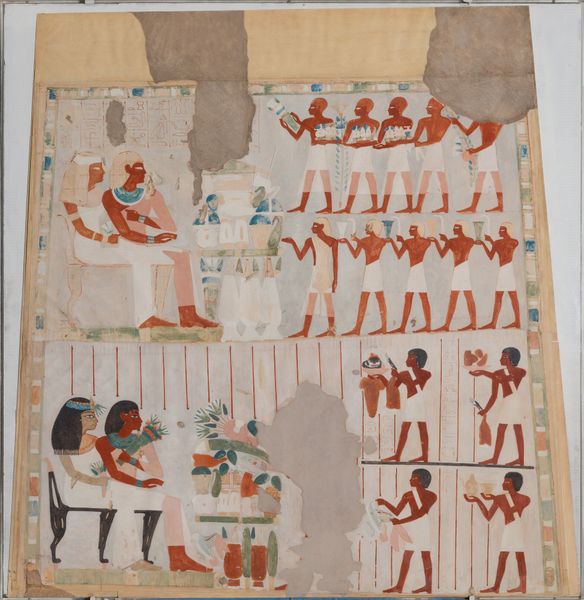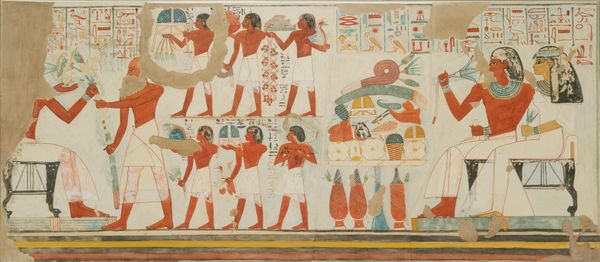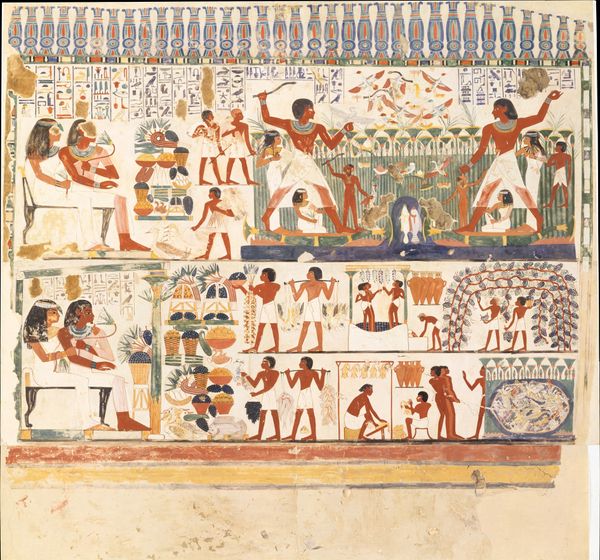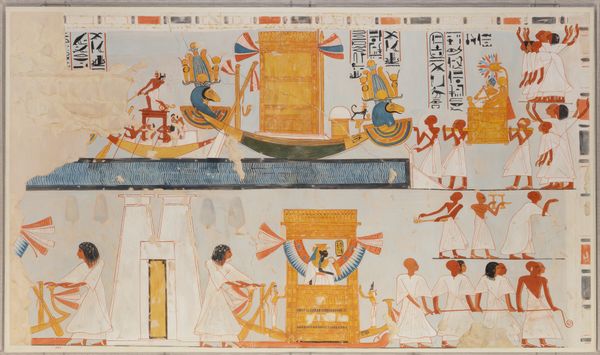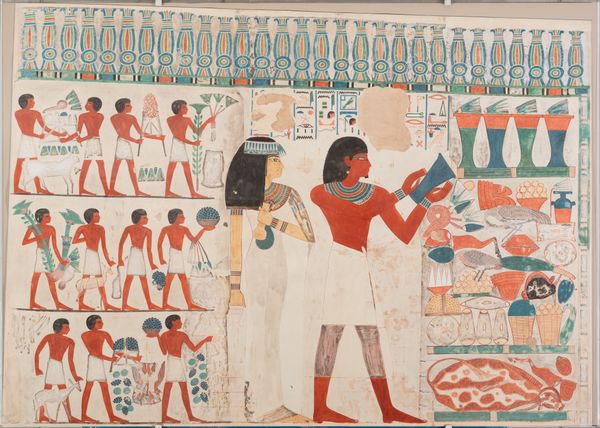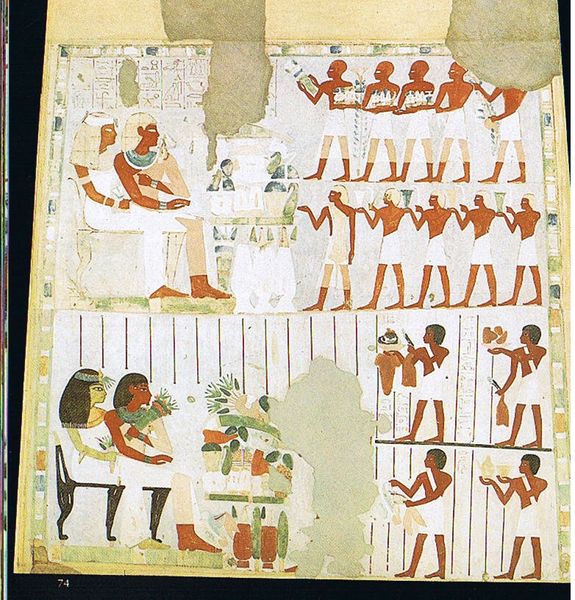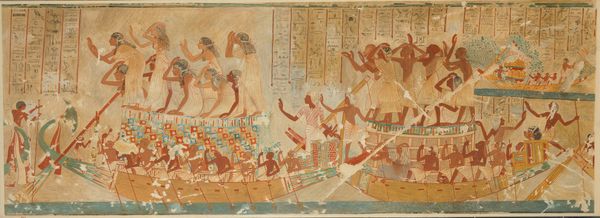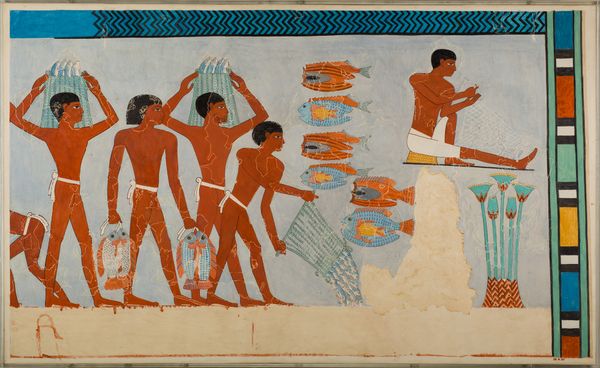
watercolor
#
portrait
#
water colours
#
ancient-egyptian-art
#
figuration
#
watercolor
#
egypt
#
ancient-mediterranean
#
wall painting
#
history-painting
Dimensions: H. 37 cm × W. 71 cm (14 9/16 × 27 15/16 in.) scale 1:2; Frame: H. 40.5 cm × W. 74 cm × D. 2 cm (15 15/16 × 29 1/8 × 13/16 in.)
Copyright: Public Domain
Curator: I'm immediately struck by the serene quality of this scene; a quiet domestic moment made monumental. The colors, the flat planes, they all contribute to a feeling of stillness, don't you think? Editor: Absolutely. What we’re looking at is a watercolor reproduction by Norman de Garis Davies of an ancient Egyptian wall painting from around 1410 BC. The original was located in the Tomb of Nakht, and here we see Nakht and his wife receiving offerings. Curator: Offerings indeed. And who *are* all those people lined up in neat rows, looking almost like a painted chorus line, bearing gifts? Editor: Precisely, Davies’ copy emphasizes their orderly arrangement. These are members of Nakht's community, bringing food and other goods. It reflects the social hierarchy of the time, illustrating Nakht's status and the expectations surrounding reciprocal exchange. You notice also that the labor is explicitly gendered. Curator: It also shows, I guess, something about the social structure of their life after death. I keep coming back to that blue, the pop of the aquamarine around their necks and on the offering table. How about their stylized faces? They are just like everyone else in Egyptian art! Is this kind of idealization itself a statement of power? Editor: Definitely. Ancient Egyptian art was nothing if not intentional in its symbolic representations of power and gendered conventions. The composite perspective, for example –profile view of the face with a frontal view of the eye– creates an idealized image. And notice the lighter skin tone attributed to the wife as a signal of class and ascribed social roles, indicative of her limited activity outdoors relative to the male subject. The presentation of Nakht and his wife communicates specific messages about their social standing. Curator: It is definitely a glimpse of immortality through an upper-class lens. This careful re-creation in watercolor makes me think of how art is able to be not only something "beautiful", but something of incredible worth and a historical record as well. What else can art give us in its many forms? Editor: It reminds me of how translation and preservation are forms of interpretation too; this piece becomes an act of storytelling through replication. The artist’s rendering shapes how we see and understand the original, filtered through time, context, and the choices they make in line, color, and composition. Curator: Precisely. It layers narratives upon narratives, and invites us to contemplate on it some more.
Comments
No comments
Be the first to comment and join the conversation on the ultimate creative platform.
